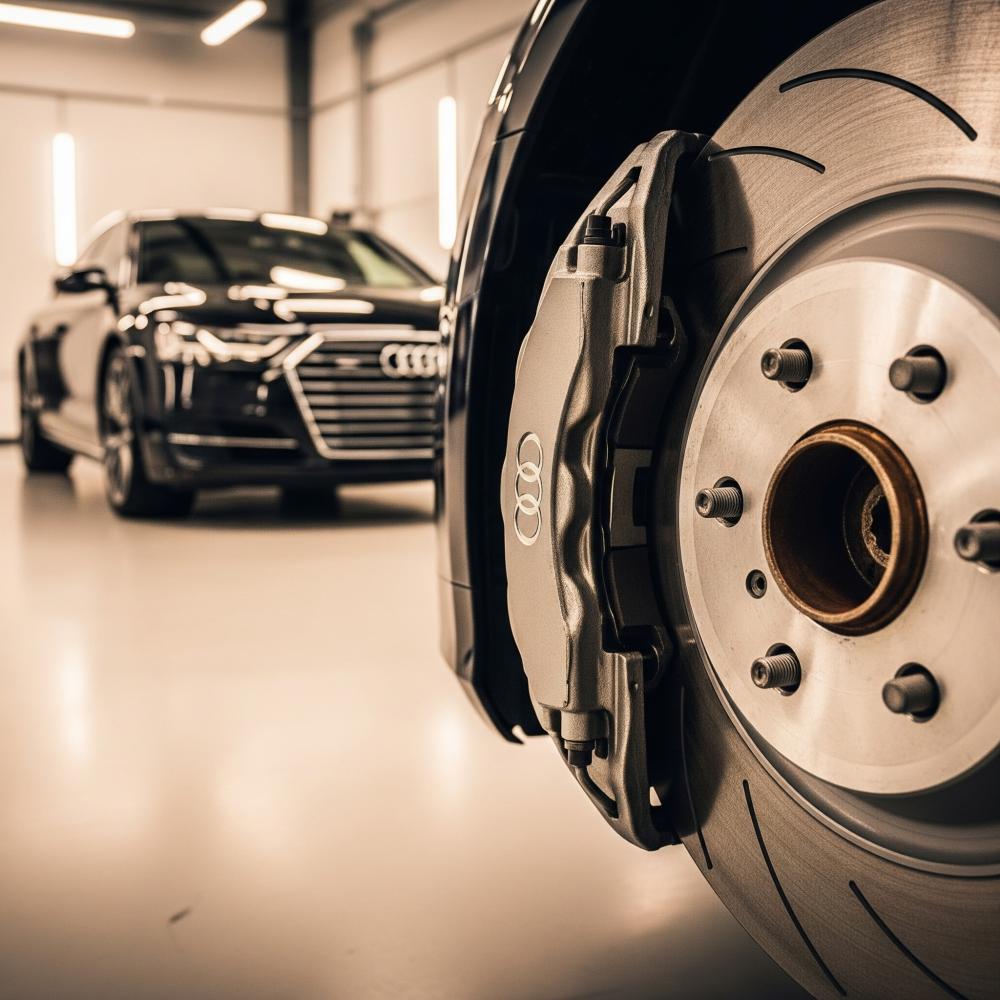Audi Front Brake Pads: Specs & Features You Didn’t Know
1. Introduction
The braking system in luxury vehicles like the Audi A8, A7, and A6 isn’t just about stopping the car—it’s a key safety feature that protects drivers, passengers, and other road users. Overall safety heavily depends on the braking system’s efficiency and its ability to react quickly under all conditions.
The front brake pads—also known as “front brake friction pads”—are the heart of this system. They absorb most of the braking force and are subjected to immense stress during daily driving or emergency stops. That’s why pad quality is crucial for vehicle performance and passenger safety.
2. Overview of Audi’s Braking System
Audi’s braking systems are advanced and multi-component, including:
- Brake pads (friction material that contacts the disc)
- Brake discs (rotors attached to the wheel)
- Calipers, brake fluid lines, and electronic control modules (ABS, ESP)
Front pads are particularly critical, handling up to 70% of the braking force. Audi’s front pads are larger and more durable to cope with high heat and wear, especially in luxury models like the A8, A7, and A6.
3. Specifications & Key Features
- Pad Size & Disc Types: Audi A8 high-performance models use carbon-ceramic rotors, while A7 and A6 often use premium-grade cast iron or hybrid materials.
- Materials & Durability: Pads are made from durable materials like cast iron or carbon-ceramic to resist wear and high temperatures—ideal for Saudi climates.
- Technology Integration: Compatible with ABS and ESP systems and equipped with wear sensors that alert drivers before safety is compromised.
- Performance Benefits: Provide quick, reliable braking even under harsh conditions, minimizing noise and vibration for smoother driving.
4. Model Comparison: A8 vs. A7 vs. A6
- Audi A8: Features luxury design with lightweight carbon-ceramic discs, offering superior braking performance and reduced unsprung weight—ideal for speed and highway driving.
- Audi A7: Delivers a sporty yet comfortable balance using high-quality iron or hybrid discs and long-lasting low-wear pads.
- Audi A6: Budget-friendly but reliable, using high-grade iron discs and sturdy pads suitable for everyday driving.
5. Brake Pad Types & Purchasing Options
- OEM Audi Pads: Available through authorized dealers. These provide exact fitment and optimal performance.
- Premium Aftermarket Pads: Brands like Brembo or Textar offer quality close to OEM standards and can be found online or at parts shops.
- Used Pads: An economical option, but risky unless sourced reliably.
- Where to Buy: OEM pads via Saudi dealerships or online platforms like Amazon or Noon, offering customer reviews and competitive pricing. Certified service centers can ensure proper fitment.
6. Cost & Installation in Saudi Arabia
Prices vary by model and system type:
- A8 (ceramic systems) tends to be more expensive
- A6 (standard iron systems) is more affordable
Typical total costs—including parts and installation—range from 1,000 to 3,000 , depending on model and service level. Installation includes removing old pads, installing new ones, and recalibrating ABS/ESP systems for optimal performance. Always use certified service centers.
7. Maintenance & Care Tips
- Sensor Monitoring: Replace pads when wear warning appears.
- Watch for Warning Signs: Listen for squeals, monitor stopping distance, and detect steering wheel vibration.
- Use Genuine Parts: Ensures optimal performance and safety.
- Regular Inspections: Check both front and rear systems for wear or damage.
8. Braking Systems in Other Audi Models
- A4, A3: Equipped with sporty-styled discs and pads.
- Q7, Q5, Q3: Feature larger brakes to support heavier SUV bodies.
- Audi E-Tron / S Line: Use electric brake boosters and compact disc systems.
Although genuine Audi parts may be limited or pricey locally, reputable centers are recommended for safety and reliability.
9. FAQs
- Which pads are best? OEM pads from authorized dealers provide safety and compatibility.
- How to detect pad wear? Listen for squeals, increased stopping distance, or dashboard warnings.
- Are used pads safe? Not ideal—risky unless tested and verified.
10. Conclusion
Front brake pads are essential to the safety and performance of your Audi. Choosing genuine OEM pads, having them correctly installed, and keeping your system in check, ensures safe and reliable braking.
For Saudi drivers, online platforms and authorized service centers provide access to quality pads and installation, helping you prioritize what matters most—your safety.

